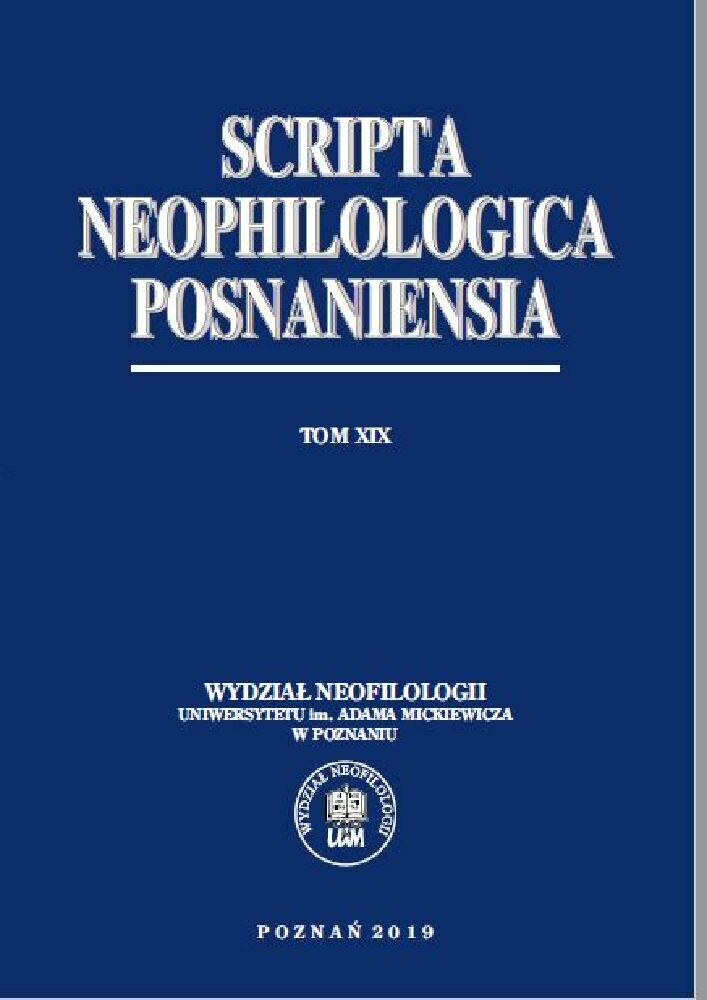Abstrakt
Currently practised methods of medical English instruction at tertiary education level often focus on medical terminology embedded in the English language classes. These strategies which comprise medical terminology and simple dialogues do not meet the needs of highly qualified medical health care workers (doctors, nurses, paramedics and many others). The new paradigm claims that medical English should be taught from the perspective of medicine and health care first and reinforced by the vocabulary acquisition; first – teach the students standards of medical practice (anatomy, pharmacology, physiology, medical sciences. and behavioural/ethical procedures), later on – concentrate on medical communication (see: M. Hull, 2004). The following paper concentrates on both formerly mentioned parameters; and also includes student and teacher motivation. Further, language acquisition as well as language learning are discussed. The new paradigm is defined as a combination of academic preparation which comprises cognitive and behavioural approaches that appear to be secondary to the context of the given class. Students are encouraged to search for synonyms, abbreviations and alternative ways of expressing meaning to communicate with each other. They also prepare their own multimedia presentations in the group and deliver speeches on subjects contained in curriculum. Concluding, the author of this paper expresses the opinion that foundational underpinnings of the curriculum of the Medical English course should be linked to the parameters for the health care professions. Context of the classes needs to be relevant to the work of the health professionals (according to Pratt and others, 2002). Over the last 10 years the paradigm for medical English teaching in North America and West European countries has changed enormously and has started to pave its new way at tertiary education level in Poland as well, which is presented briefly in this paper and – hopefully will continue to develop according to the newly occurring phenomena.
Bibliografia
Cockerham, W.C. 2016. Medical sociology. London and New York: Routledge; Taylor and Francis Group.
Dudley-Evans, T. And M.J. St. John. 1998. Developments in English for specific purposes. A multidisciplinary approach. Cambridge. Cambridge University Press.
Friedmann, T.L. 2007. The world is flat: a brief history of the twenty–first century. New York: Farrar, Strauss and Giroux.
Hodges, B., and C.Segouin. 2008. “Medical education: it’s time for transatlantic dialogue”. Medical Education 42. 2-3.
Hull, M. 2004. Changing the paradigm for medical English language teaching. https://www.usingenglish.com/articles/changing-paradigm-for-medical-english-language-teaching.html. D.O.A. 09.08.2018.
Hosley, J. and E. Molle. 2006. A practical guide to therapeutic communication for health professionals. St. Louis: Elsevier, Inc.
Krashen, S. 2002. “The comprehension hypothesis extended” . In: Piske, T. and M. Young-Scholten (eds.). Input matters in SLA. Bristol: Multilingual Matters.
Kurtz, S., Silvermann, J. and J. Draper. 2006. Teaching and learning communication skills in medicine. Bingdon, U.K.: CRC Press, Taylor and Francis Group.
Lloyd, M. and R. Bor. 2006. Communication skills for medicine. Edinburgh, London, New York, Oxford, Philadelphia, St. Louis, Sydney, Toronto: Churchill Livingstone.
Micic, S. 2013. “Languages of medicine –present and future”. JAHR 4.7. 217-233.
Cassell, E. 1976. “Disease as an “it”: concepts of disease revealed by patients’ presentation of symptoms”. Social Science and Medicine 10. 143-146.
Crookshank, F.G. MD. 1923. “The importance of a theory of signs and a critique of language in the theory of medicine”. In: Ogden, C. and I. Richards (eds.). The meaning of meaning. London/New York: Harcourt Brace.
McCullough, L.B. 1989. “The abstract character of transforming and power of medical language”. Soundings 72 (1). 111-125.
Mintz, D. 1992. What’s in a word? The distancing function of language in medicine. Journal of Medical Humanities 13. 223-233.
Orr, T. 2002. “Introduction: The nature of English for specific purposes”. English for Specific Purposes TESOL JOURNAL. 1-2.
Oxford English Dictionary, 2012. Oxford. Oxford University Press. (https://en.oxforddictionaries.com/ definition/communicate)
Pillegard, H. 2000. Reviews and perspectives in physiology. Cambridge: Cambridge University Press.
Pratt, D., S. Brookfield. 2002. Five perspectives on teaching in adult and higher education. Krieger Publishing Company, USA.
Silvermann, J., Kurtz, S. and J. Draper. 2016. Skills for communicating with patients. Croydon. CRC Press. Taylor and Francis Group.
Spencer, C. 2008. “Private Practice. Can we train eager young doctors without government involvement? “The Toronto Sun. 24 June 2008.
Swales, J. 1988. “Discourse, communities, genres and English as an international language”. World Englishes 7.2. 211-220.
Widdowson, H. G. 1977. “The acquisition and use of language system” . Studies in Second Language Acquisition 2/1. 15-26.
Wood, A. 2001. “International scientific English; the language of research scientists around the world”. In: Flowerdew, J. and M. Peacock (eds.). Research perspectives on English for academic purposes. Cambridge: Cambridge University Press. 71-83.
